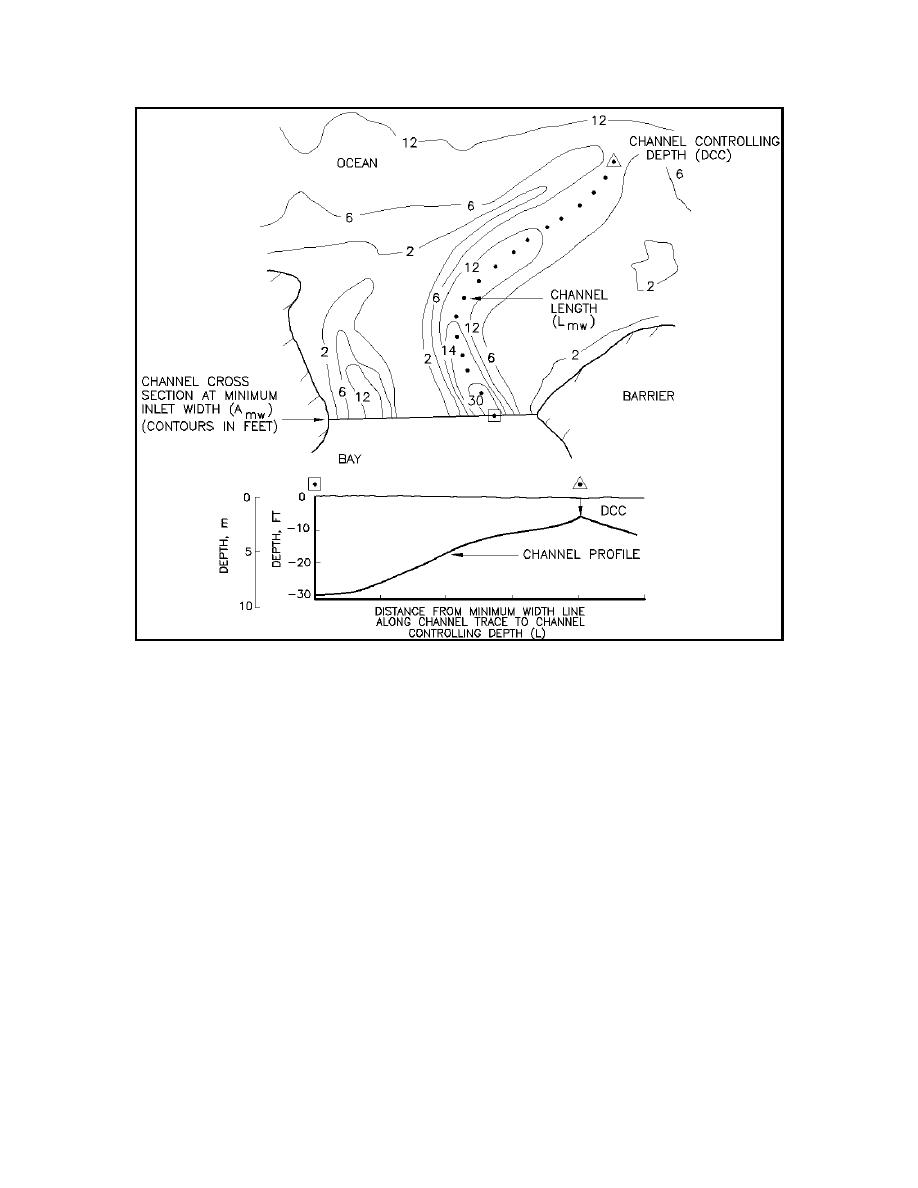
EM 1110-2-1100 (Part II)
30 Apr 02
Figure II-6-3.
Channel parameter measurement (Vincent and Corson 1980)
II-6-2. Inlet Hydrodynamics
a. Introduction.
(1) Many approaches are available to evaluate inlet hydrodynamics. Analytic expressions, numerical
models, and physical models can be used. This section will present some simple analytic techniques to
determine average velocities in a channel cross section due to the ocean tide and tidal elevation change in the
bay. This section also will aid in understanding inlet response with regard to important parameters such as
size of bay or channel area and length. Tidal inlet hydrodynamics are summarized by van de Kreeke (1988)
and by Mehta and Joshi (1984).
(2) To characterize the development of inlet currents, COL E. I. Brown (1928) wrote the following:
To trace the characteristics of the flow of the tides through an inlet, assume the case of an inland
bay being formed by the prolongation of a sandspit. It is quite evident that in the earlier stages of
the growth of the spit the tide will rise and fall in the bay equally and simultaneously with its rise and
fall in the surrounding ocean, and that a tidal current will be practically negligible. This state of
affairs will continue for a long time, as long as the full and free propagation of the tidal wave is
Hydrodynamics of Tidal Inlets
II-6-5


 Previous Page
Previous Page
